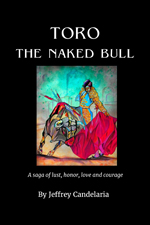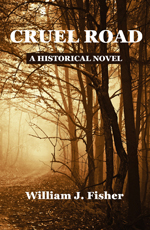Jodi Lea Stewart is the author of three historical fiction novels for adults as well as a contemporary young adult trilogy (Silki, the Girl of Many Scarves). TRIUMPH: A Novel of the Human Spirit (September 2020) is her newest historical fiction release. You’ll find Jodi Lea on JodiLeaStewart.com, on her Facebook pages at jodi.lea.stewart and AuthorJodiLeaStewart, and on Twitter. Visit her Amazon author page for all her titles.
 What would you like readers to know about Triumph?
What would you like readers to know about Triumph?
People read novels for entertainment, escape, or education. If I am being bold, I might dare to believe TRIUMPH, a Novel of the Human Spirit hits all three categories. Let me explain.
Entertainment when reading a novel comes from a compelling and sensible plot with colorful characters the reader comes to greatly care about. With every page and chapter written for TRIUMPH, my desire was for the story to stay exciting enough to compel the reader to eagerly turn the page. My background in journalism aids me endlessly in striving to achieve that goal, and whether I succeeded or not is up to my readers to decide.
Escapism takes many forms in novel writing. One form is transporting the reader to exotic locations. Spanning from 1903 to 1968, the settings for TRIUMPH include a spooky Louisiana swamp at night, a Texas ranch, New Orleans, and a bustling St. Louis in the 1950s—a city that, after the Brown v. Board of Education ruling in 1954, became a frontline city ending segregation in public schools.
Educationally, the story spins on the theme that regardless of our socioeconomic level, our race, age, or creed, we all have merit. We all desire to be appreciated and accepted. By my readers getting to know and care about the characters in TRIUMPH, I hoped they and I could use them as models of how we can all transcend prejudices and limits that keep us stagnated in preconceived ideas.
What do you hope readers will take away from the book?
Celebrating our human differences is exhilarating. What a boring world it would be if we were all alike. Further, no matter where you come from or where you are going, regardless of how much money you have or don’t have, no matter your color…you have merit.
What unique challenges did this work pose for you?
TRIUMPH is my first novel with different points of view and different timelines. I like to metaphorically say that during the writing process, I became a mad scientist in a white coat, coke-bottle glasses, beakers bubbling behind me on the Bunsen burners. I was mixing formulas, testing data, researching, and spilling my concoctions all over the Louisiana wetlands and beyond. I was also juggling timelines, points of view, four strong storylines, dialects, and accents. Also, I constantly, had to be an introspective analyzer of my own filters and stay aware of any possible prejudices that I might not know I had. I found the process beautifully exhausting!
Who are your main characters?
ANNIE is from what many people call a broken home. In other words, her momma is divorced and works herself to exhaustion but is barely able to support her four kids. Annie’s grammar is backwoods, to say the least. Mercy’s correction of Annie’s poor grammar amazes her, but Mercy is a beautiful fascination to Annie from the moment they meet on the schoolyard the first day of fifth grade. Annie allows Mercy to lead her, correct her, and reshape her in every possible way.
MERCY is from an affluent Black family living in the Ville, an upper crust section of St. Louis. Already sophisticated beyond her age, she finds Annie’s invisible blond eyelashes and eyebrows intriguing. The girls feel a strong bond the first time they meet. Together, they secretly explore St. Louis via bus and streetcar, encountering cultural prejudices at every turn—including from within Annie’s own family. The turbulent times and the Civil Rights Movement will test the girls’ loyalty and affect their choices on the way to adulthood.
WILLIE is a young boy stolen by a Vodou priestess when he is five. In an attempt to save him, he is stolen again by ISABELLE, who takes them on a hair-raising trek through the swamps at night and over the terrifying Suicide Bridge. One day, Willie will fight bloody battles in France, come face-to-face with the horrors of Vodou, and seek the answers to his mysterious life.
In bustling New Orleans, 1903, JACK, a former Texas Ranger, has an encounter with a young beauty, SELENE, hiding in his hotel room. What she wants and needs will change both of their lives forever and set in motion a dynasty that remains sealed until the end of the story.
You use several settings/time periods in the book. What makes them important to the telling of the story?
I wanted my readers to experience the journey of several key characters, whether through their heritage or their personal lives, as they live inside the mores of the early twentieth century, past the mid-century mark, and into the 1960s. The sweeping differences in our culture during that time period in this country, and how those differences permeated and affected individuals and society as a whole, provides an intricate and colorful backdrop to highlight changes in the characters’ personal prejudices as they become enlightened to the dignity and spark of life in every individual.
How did the book came together?
I wrote TRIUMPH in less than a year, and the editing process took a few months to complete. The hardest part for me is setting up the launch for any novel. It can get quite exhausting, and the one for TRIUMPH actually gave me my first case of writer’s block for a few months. I shifted my energy from creativity and editing to getting my latest creation “out there” and it changed my brain for a little while. Strange but true, but I overcame it and wrote another novel right away. The story for TRIUMPH began with my sitting down at the computer one day, and out of the blue, I wrote a scene of a Vodou priestess stealing a child. My husband said, “Oh, this sounds evil,” when he read it. I said, “Yeah, it does, and I’m going to write a whole book starting with that scene,” and I did.
Some of my own background fueled aspects of this novel because my mother had us briefly in St. Louis when I was very young. Single and with three children, she worked three waitress jobs for fifty cents an hour and managed to keep us all afloat. I had my first experience with prejudice there, and it vividly imprinted on my mind as unfair. It seems all my friends in the schoolyard were mostly African American, and I didn’t even realize it until the principal called my mother to “tell on me.” I think that experience created in me a fierce loyalty to all races from that time forward.
What was the most rewarding aspect of writing Triumph?
The most rewarding aspect was getting to share my heart on the issues of prejudice in whatever form they take.
What are the challenges of writing for the historical fiction market?
Accuracy is the biggest challenge in writing historical fiction. The research is exhaustive, as it must be, to dare place a story and characters inside a time period in which the author has not personally lived. I suggest books, interviews, and family stories to add authenticity. Check your facts many, many times.
Which do you prefer: the creating, editing or researching aspect of a writing project?
I struggle as most writers do through the first pass when I am creating something from nothing and making all the plot points meet and work. That’s when I do ninety percent of my research, but I actually research and double check throughout the entire process. After the first completed pass, I sail a zillion times through the rereads, rewrites, and edits as happy as an oyster with a new pearl.
Do you have a message or a theme that recurs in your work?
The message that recurs in all my novels is triumph over adversity. I didn’t realize it until an online writing coach said everyone should name all of our favorite movies from the beginning of time to find what their life theme is. My favorites were Les Misérables, Phantom of the Opera, and Secretariat. Those choices showed me the theme of my life also runs through my written work. Overcoming adversity and good over evil prevail in my novels no matter what story, adventure, or mystery I wrap them in. How ironic that I named my most recently published work TRIUMPH, a Novel of the Human Spirit before I came to this conclusion.
What writing projects are you working on now?
My newest historical fiction novel, which I can’t share the title of yet, was completed in nine months and is my first international novel. Right now, I’m working on sending the foreign words/phrases to my word advisors for accuracy. I don’t speak all those languages in this novel (Spanish, Chinese, Italian, and Croatian), but I sprinkle words and sentences in for authenticity and spice. This latest work is about a clandestine international agency that rescues lost people, most of them children. It features three strong women, and has, like TRIUMPH, different timelines and different points of view. It begins in Texas for all the main characters, but PINKIE winds up in Mexico, Argentina, and Brazil. BABE is born in Texas and is taken to China and then Hong Kong. The background features the invasion of China in 1937 and their ensuing civil war, and also takes place during World War II. The timespan is 1937 to 1959. Honestly, I’m very excited about this novel. Look for it in mid-2022.
Is there anything else you’d like readers to know?
TRIUMPH is an adult book, 18+ target age, mostly because there are descriptions of long-ago Vodou ceremonies that are quite fearsome. It is for readers who enjoy high-concept historical fiction written with a literary pen, unfolding inside an interwoven plot. It should appeal to readers who enjoy a Southern theme with racial issues shown in a positive light. Though it sounds a bit supercilious of me to say, I truly believe the same audience that loved To Kill a Mockingbird would love this novel.
There is a bit of a Huckleberry Finn (without the racial slurs and terminology, of course) feel to TRIUMPH. It is slightly reminiscent of the vintage movie Guess Who’s Coming to Dinner, played out by two girls of different races who merely want to be best friends. I think anyone who enjoyed the novels Where the Crawdads Sing and Fried Green Tomatoes at the Whistle Stop Café would enjoy the heck out of TRIUMPH.
 KL Wagoner (writing as Cate Macabe) is the author of This New Mountain: a memoir of AJ Jackson, private investigator, repossessor, and grandmother. Kathy posts to a speculative fiction blog at klwagoner.com and writes about memoir at ThisNewMountain.com.
KL Wagoner (writing as Cate Macabe) is the author of This New Mountain: a memoir of AJ Jackson, private investigator, repossessor, and grandmother. Kathy posts to a speculative fiction blog at klwagoner.com and writes about memoir at ThisNewMountain.com.
 What would you like people to know about the story you tell in TORO?
What would you like people to know about the story you tell in TORO? KL Wagoner (writing as Cate Macabe) is the author of This New Mountain: a memoir of AJ Jackson, private investigator, repossessor, and grandmother. Kathy posts to a speculative fiction blog at klwagoner.com and writes about memoir at ThisNewMountain.com.
KL Wagoner (writing as Cate Macabe) is the author of This New Mountain: a memoir of AJ Jackson, private investigator, repossessor, and grandmother. Kathy posts to a speculative fiction blog at klwagoner.com and writes about memoir at ThisNewMountain.com.












